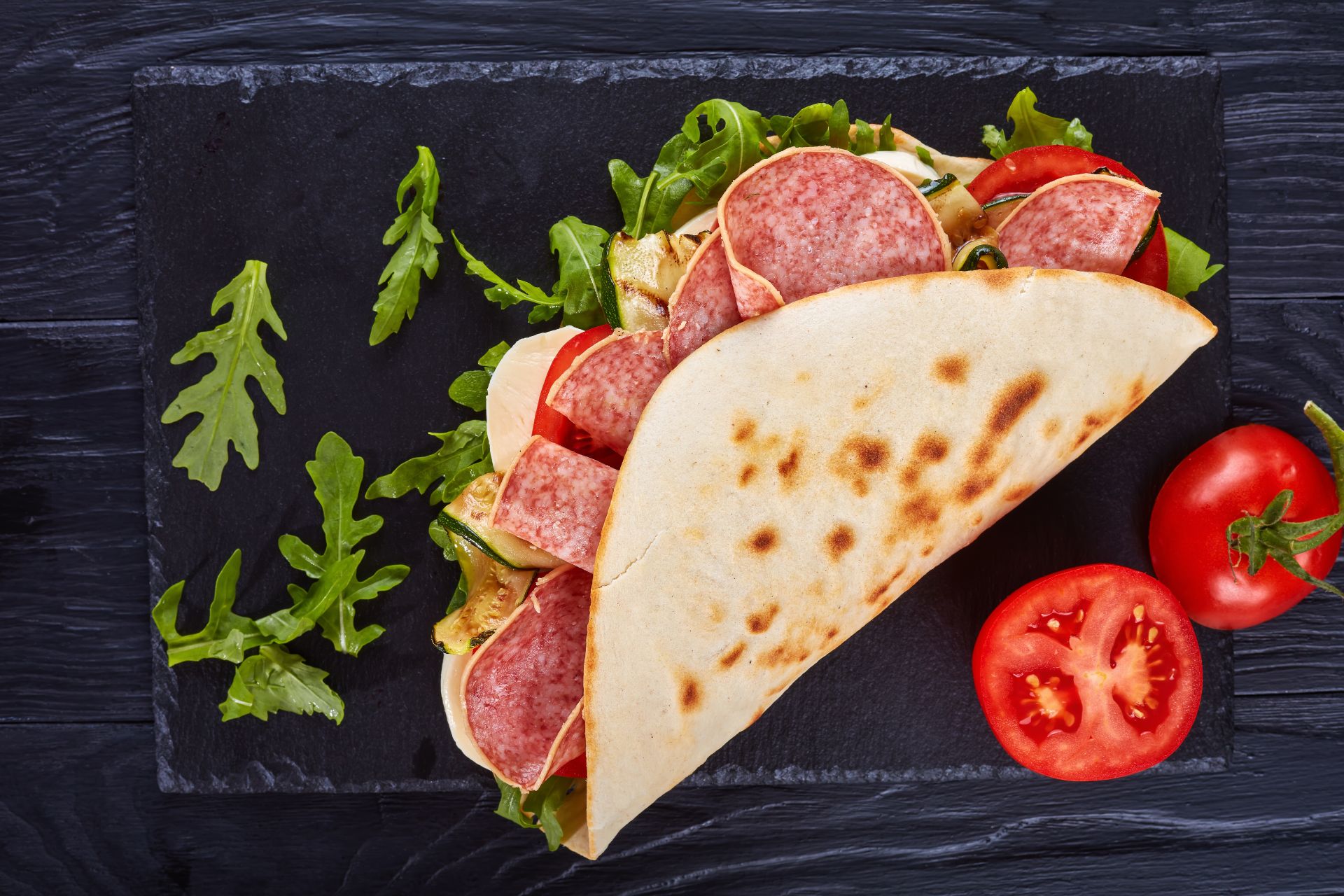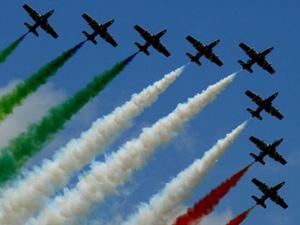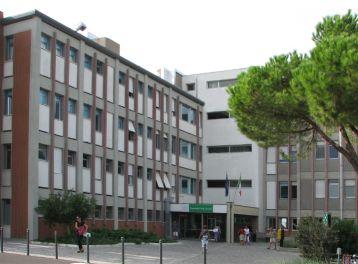Forlì (AFI: /forˈli/, Furlè in Romagnolo) is an Italian municipality with 117,464 inhabitants, capital of the province of Forlì-Cesena together with Cesena, located in Emilia-Romagna. The city is also bishopric of the Forlì-Bertinoro diocese.
Since the establishment of the Kingdom of Italy, Forlì has been the capital, together with Cesena, of the province of the same name. However, with the separation of the territory of Rimini in 1992, which became an autonomous province, the remaining area became the province of Forlì-Cesena.
According to tradition, Forlì was founded in 188 BC., celebrating its 22 centuries of history in 2012-2013. Historian Sigismondo Marchesi, however, backdates the foundation to 208 BC.
Forlì is located in the Po Valley, in Romagna, only 5 km from the foothills of the Tuscan-Romagna Preappenines and about 26 km from the Adriatic Riviera. The peripheral area is crossed by the Montone river, which joins the Rabbi river at Vecchiazzano district before skimming the ancient city walls near Porta Schiavonia. Another important waterway is the river Ronco, which flows through the district of the same name on the outskirts of the city.
History
Origins and ancient times
Forlì boasts very ancient origins, with traces of settlements dating back to the Palaeolithicas demonstrated by the finds at Mount Poggiolo dated to about 800,000 years ago. During work on the new prison in 2010, a prehistoric necropolis of 4,000 years agoconfirming the stable human presence already at that time.
The city initially arose on an Etruscan trading settlement called Ficlinemeaning 'land of the potters', renowned for its ceramic production, famous in later centuries. The present name, Livii Forumis of Roman origin and dates back to the 188 BC., attributed to Gaius Livius Salinator. Tradition links him to his father's victory, Marco Livio Salinatoreagainst Asdrubal in the Battle of the Metauro. Underground traces of the Roman city survive, such as bridges and paved streets.
Middle Ages
With the fall of the Roman Empire, Forlì came under the reigns of the Ostrogoths and subsequently of the Byzantines. The city, founded on an island between two rivers for defensive reasons, faced frequent flooding, which was resolved with hydraulic interventions around the 1050.
Forlì was a protagonist in the medieval struggles between the Guelphs and Ghibellines and maintained a strong municipal autonomy, even obtaining the right to mint money from Frederick II at 1241. The family Ordelaffi ruled the city since 13th to 16th century, resisting the intervention of Pope Innocent VI and the military campaigns of Egidio Albornoz. In the 14th century, Forlì was equipped with a mechanical clock, one of the first in Italy.
The city was also a hub for the community Jewishwith schools and pews active since the 13th century. Prominent figures include Hillel from Veronawhose thinking also influenced Dante Alighieri.
Modern Age
In RenaissanceForlì was marked by the figure of Caterina Sforzawho heroically resisted the siege of Cesare Borgia in the fortress of Ravaldino. After the short-lived control of the Ordelaffi family, the city passed to the Papal Stateby initiating a period of stability with the establishment of the Ninety Pacifici at 1540.
The plague of 1630devastating throughout Italy, spared Forlì, an event attributed to the intercession of the Our Lady of Firepatron saint of the city. During Napoleonic rule, Forlì became the capital of the department of Rubicon and also experienced innovative phenomena, such as the introduction of the divorce.
Contemporary Age
In the 19th century, Forlì grew economically thanks to agriculture and trade, especially the halls from Cervia, and to nascent industry, with activities such as kilns, breweries and manufacturing factories. During the Risorgimento, the town gave birth to prominent figures such as Aurelio SaffiMazzinian patriot.
In Twenty years of Fascism, Forlì, close to Christmas Predappio of Benito Mussolini, it was called 'the city of the Duce'. This period left an important architectural imprint, with buildings such as the Post Office Building and the Aeronautical Collegeexamples of the Italian rationalism.
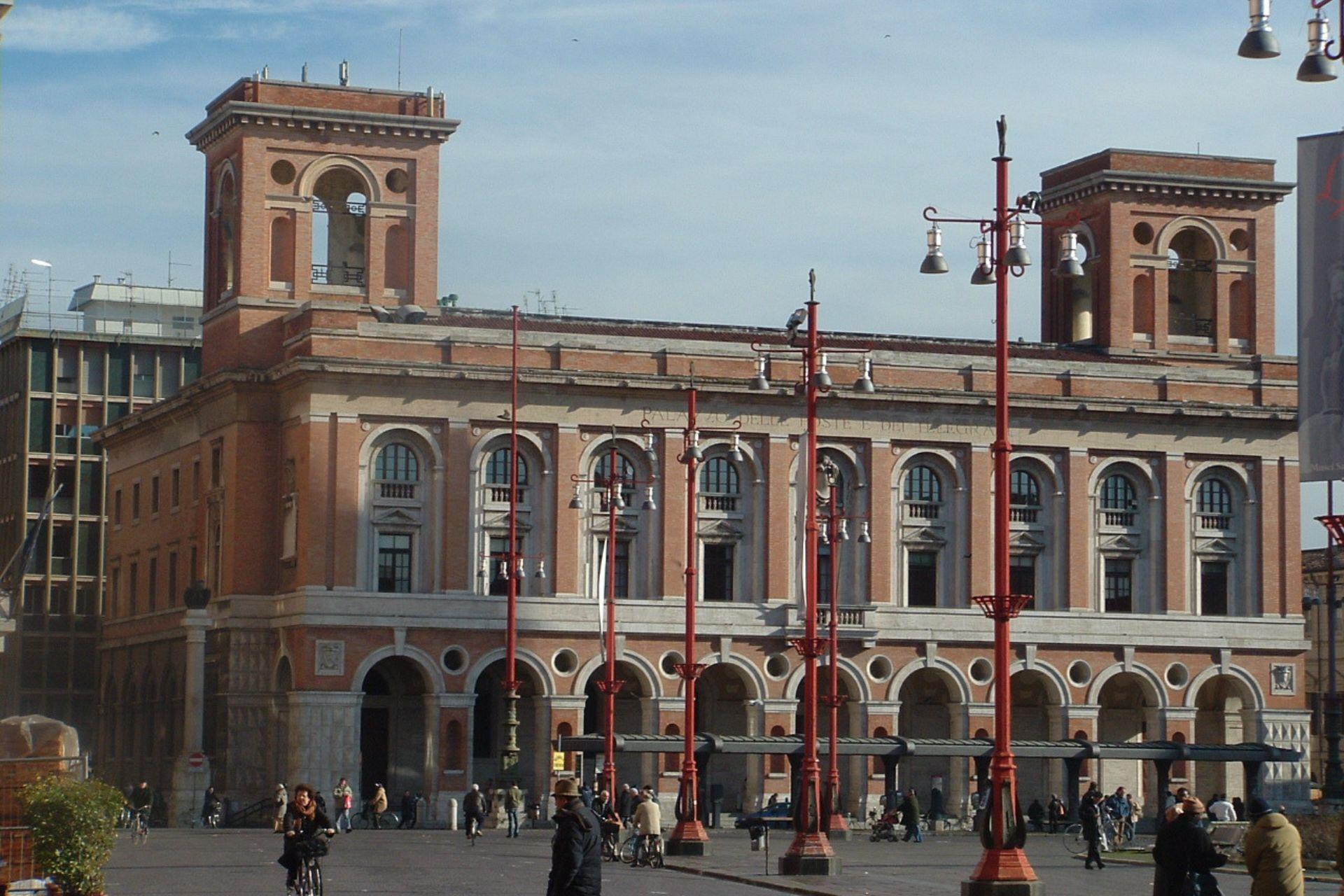
World War II devastated the city: many historic buildings were destroyed, including the church of Saint Blaise. Forlì came liberated the 9 November 1944 by British and Indian troops with the support of partisan brigades.
In the post-war period, Forlì recovered by developing an economic fabric based on agriculture, crafts and small enterprises. In 1988the city was the scene of the assassination of Senator Roberto Ruffilli by the Red Brigades, an event that profoundly marked recent history.
Symbols
Coat of arms
The coat of arms of Forlì, officially recognised with decree of 15 May 1931, has the following blazoning:
"In gold, to the eagle spread in black, crowned and bordered on the field, holding in the right claw an oval shield set in a red band with a silver cross, and in the left claw an oval shield also set in a silver bar to the band of the same, bordered and charged with the motto Libertasall in black. Exterior city ornaments."
The municipal bannerwhich features the city coat of arms in the centre, is divided into two sections: the upper one is whitewhile the lower one is redrecalling the historical colours of the city.
According to tradition, the zodiac sign of Forlì is the Capricorn.
Honours
City Title
Forlì received the city title at 1195 by sovereign concession of Pope Innocent IIItitle subsequently confirmed by royal decree on 15 May 1931.
Silver Medal for Military Valour
Forlì is among the cities decorated for military valour for its contribution to the war of liberation during the World War II. The city was awarded the Silver Medal for Military Valour on the following grounds:
"During fourteen months of hard struggle against German oppression, he courageously expressed and supported the partisan formations that operated in the region against the enemy armed forces, wearing them out and making their movement on the Romagna railways and the Forlì - Faenza railway line, which were important supply axes for their operational effort on the front, difficult. The action of the armed volunteers was flanked by that, no less effective, of the workers who, by sabotaging the industrial plants, prevented their pre-arranged transfer to Germany. The contribution of fallen soldiers and civilian martyrs, the suffering and destruction endured by the people of Forlì in their obstinate opposition to enemy overpowering, testified to their absolute dedication to the highest ideals of the homeland, freedom and justice."
- Forlì area, 8 September 1943 - November 1944
- 7 February 1975
Monuments and places of interest
Religious Architecture
- Abbey of San MercurialeLocated in Piazza Aurelio Saffi, it is the symbol of the city with its tall Romanesque bell tower.
- Cathedral of the Holy Cross: Cathedral of the city and bishopric of the Diocese of Forlì-Bertinoro.
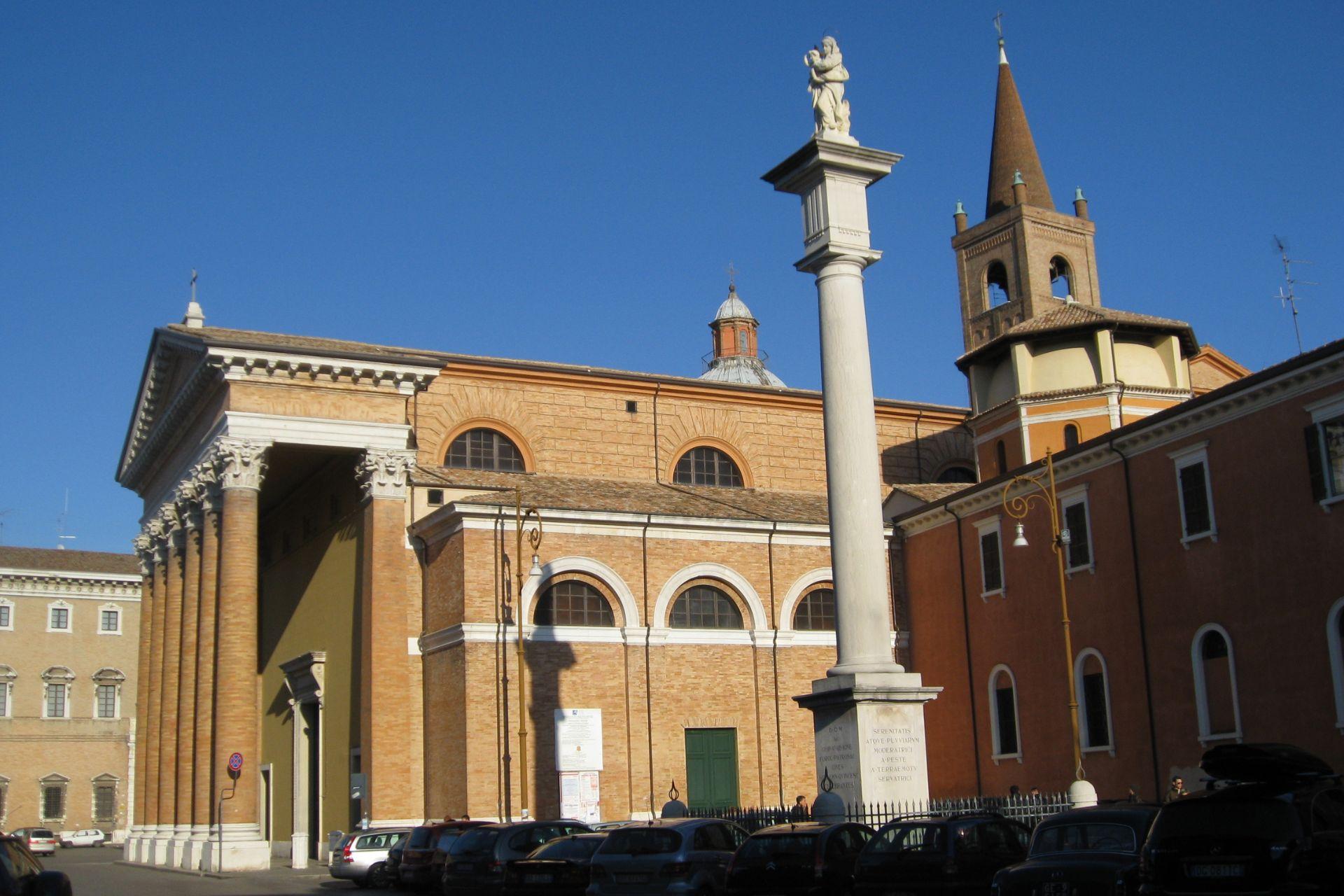
- San Domenico: Restored complex that today houses international exhibitions and showsin addition to the Art Gallery and Civic Museums.
- Basilica of San Pellegrino Laziosi: Shrine dedicated to the patron saint of the terminally ill.
- Church of CarmineFamous for its 15th-century marble portal by Marino Cedrini.
- Corpus Christi Church and Monastery: A place of outstanding historical and architectural interest.
- Church of San Filippo Neri, Saint Blaise, Sant'Antonio Abate in Ravaldino e Parish Church of Santa Maria in Acquedotto: Important religious testimonies of the city.
Civil architecture
- Paulucci de Calboli Palace e Sangiorgi Palace: Examples of the city's noble heritage.
- Post Office Building e State Office Building: Testimonies of the Fascist rationalismwhich makes Forlì the project leader ATRIUM dedicated to the architecture of 20th century regimes.
- Merenda Palace: Home of the municipal library and civic museums.
- Palmeggiani House, Hercolani Palace e Sassi Masini PalaceHistorical residences of great value.
Military Architecture and Historic Gates
- Porta Schiavonia: The only surviving gate in the ancient city walls, dating from the 18th century.
- Cotogni Gate, Porta San Pietro e Ravaldino Gate: Important in the defensive history of the city, today no longer in existence.
- Rock of Ravaldino: Medieval fortress known to have been the defensive bulwark of Caterina Sforza.
Historic Squares and Streets
- Piazza Aurelio Saffi: Nerve centre of the city, characterised by theAbbey of San Mercuriale, from Town Hall and from the Palace of the Podesta.
- Piazza del Duomo/Piazza Ordelaffi: Hosts the Cathedral of the Holy Cross and the column of Our Lady of Firepatron saint of Forli.
- Corso della RepubblicaMain axis of the city, with buildings of interest such as theCity Hotels designed by Gio Ponti.
- Corso Giuseppe Mazzini: A porticoed road connecting Piazza Saffi with the northern suburbs.
- Corso Garibaldi and Corso Armando DiazHistorical streets full of palaces and churches, with references to Garibaldi and Caterina Sforza.
Natural areas
- Franco Agosto Urban Park: The city's green lung, spread over a bend in the Montone river.
- Resistance Park e Paul Harris Park: Large green spaces dedicated to recreation and memory.
- Ladin Forest: Rare example of historic woodland, Site of Community Interest (SCI).
- Oasis of Magliano: A natural area dedicated to the protection of aquatic avifauna.
Cemeteries
- Forlì Monumental Cemetery: Resting place with elements of artistic merit.
- Indian Cemetery e English Cemetery: Evidence of the international presence during the Second World War.


